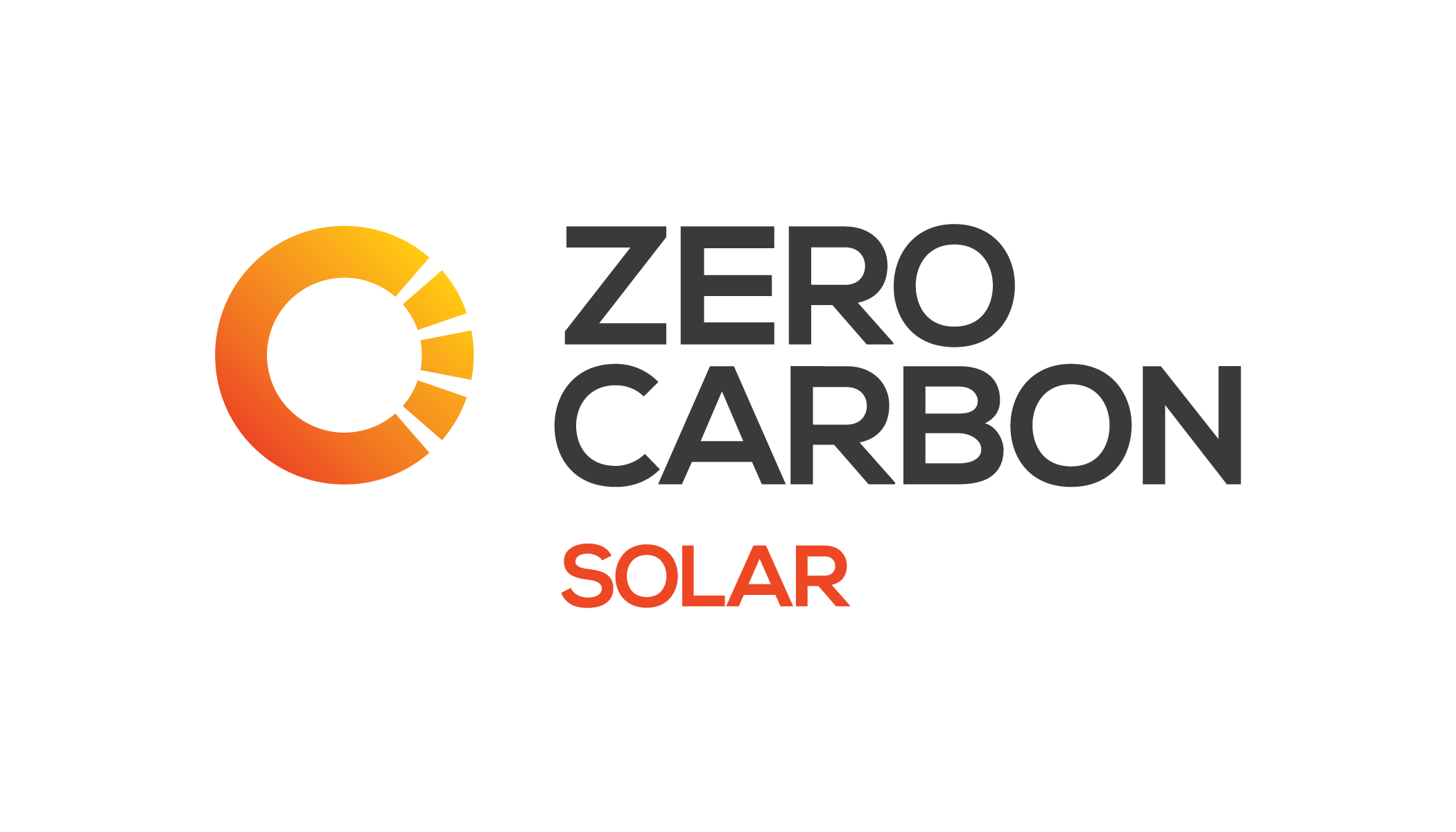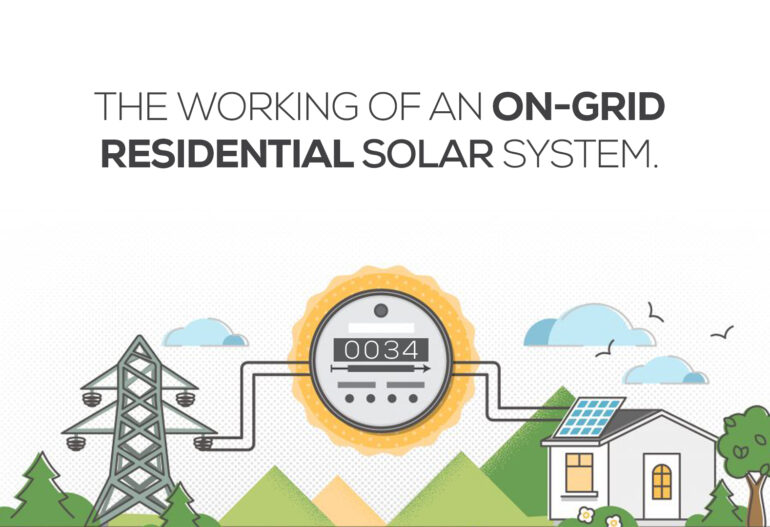Pakistan has been facing swerve price hikes regarding essential commodities for the last couple of years. The situation has worsened for the previous year as the basic electricity costs around Rs. 24.82 per kWh. The adjustments were made in July, August, and October 2022. Due to this massive increase, the monthly expenditure of an average household exceeds the budget causing distress in fiscal management. Therefore, it is advised to switch to alternative power sources. Solar panels are the most eco-friendly and economically beneficial substitute for the national power supply. This article is focused on the on-grid or grid-tied solar panel for residential setup and its working.
Introduction to Residential Solar System
When the solar panels attached to the batteries are installed on the roof-top of any house, it is called the residential solar system or the home solar system. The residential solar systems are customised according to the estimated monthly power requirement of the concerned home. The types and mechanisms of the same are discussed below.
Types of the Residential Solar System
Zero Carbon provides efficient and advanced residential solar solutions. The solar systems we deal in are on-grid and hybrid. Both are explained in the following.
- On-Grid Solar System
- Hybrid Solar System
On-Grid Solar System is also known as the ‘Grid-tied’ solar system. The kind of solar power system that integrates with the utility (national) grid station is called a grid-tie system. This device was created to utilise grid power so individuals could stop using pricey solar batteries.
Since the on-grid technology does not require batteries to store electricity, it is more dependable and cost-effective. This system is referred to as a grid-tie or on-grid system because of its connection to the grid. Without any connection to the utility station, this system cannot function. Some grid-tie solutions also offer to upgrade the system with batteries to increase efficiency.
A grid-connected, battery-powered renewable energy system known as a hybrid solar system. The system generates electricity during the day using solar panels, and the batteries store any extra energy for use at night when there is no light from the sun.
Mechanism of On-Grid Residential Solar System
As mentioned above, a grid connection is necessary for the grid-tie or on-grid solar system to function. Because of this, it is not viable for distant areas, but it is the best method currently available for locations with easy access to the grid. For instance, the cities and small towns have the power supply from DISCO suppliers of NEPRA (National Electric Power Regulatory Authority).
The following elements make up the on-grid solar solution:
- Grid-tied inverters and solar panels
- Assembling Wires
- Utility grid connection DC switch Net Meter
The energy generation procedure in residential unit solar systems comprises five steps. These are as the following.
- Generation of Electricity in PV Panels
- Conversion of Power Units
- Esurance of Power Supply
- Power Storage
- Net Metering Settlement
When the sunlight reaches the Photovoltaic (PV) sheets of the solar panel installed on the roof-top of the house or residential unit, these sheets absorb the natural power source and convert it into electricity.
Direct current (DC) is generated by solar panels when the sun shines on them, stimulating the movement of electrons that results in current. The current is direct because all these electrons move in the same direction. However, the appliances in the home cannot utilise this direct current because all electrical equipment requires Alternating Current (AC) within a specific voltage range to be used to their full potential. The inverter does the work of making it usable.
Zero Carbon’s solar solutions’ grid-tie inverters are from A-grade suppliers. The on-grid solar converter transforms the current into alternating current, with an average voltage of 240v, so that equipment may use it. Because it controls all input and output aspects to guarantee the system’s efficient functioning, the inverter is often known as the brain of the solar panel system.
Powerful and high-voltage electricity lines supply the house with the 240 V AC that the inverter converted to ensure little to no electricity loss. The current from the grid station is added when the demand for power rises faster than the production rate.
It is necessary to store any extra electricity generated by the system to prevent it from being wasted and going to waste. These systems use the grid stations as fictitious batteries to address the issue. As a result, the plan can be more reasonably priced than a solar system that relies on batteries. The entire amount of electricity that the on-grid solar system generates and not used by the appliances is sent to the grid station.
Here comes a beneficial element of net metering. Net-Metering is a mechanism that benefits homeowners who have set up the solar system in their location and are willing to contribute excessive power units to the national grid.
In Pakistan, net metering is diverse from other countries. However, the NEPRA and DISCOs are the parties to decide whether any residential unit is eligible for net metering.
If the home is net-metered, the power metre will run backwards to give credit for any electricity consumed at night or during other times when the home’s power usage exceeds the system’s capacity. Only the client’s “net” energy utility is billed. The forefront digital metre continues to operate in both directions to consider the power produced at the customer’s residence. Customers can generate their power effectively and efficiently thanks to net metering.
Benefits of Installing a Residential Solar System
There are numerous benefits if you install a solar panel on your home setup.
- A noticeable reduction in electricity expenses.
- Environmentally Friendly Alternative to the National Power Source
- Easy to run ACs and Fans in Summer as per Requirement
- An opportunity to get rid of load shedding
Zero Carbon Offers Quality Services
We, Zero Carbon, are the licensed providers of the residential solar system in Pakistan. All you must do is fill out this form with your questions, and our representatives will get back to you. We have a team of experts who will assist you in auditing your location and depicting the size of your solar panel, system design, assistance in permission acquisition, installations, grid mixing, net metering, monitoring, and management. We have a proper app setup that helps you understand your power consumption and the performance of solar panels at your fingertips. So, do not waste any further time and get into discussions.




